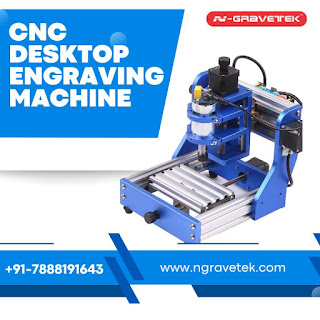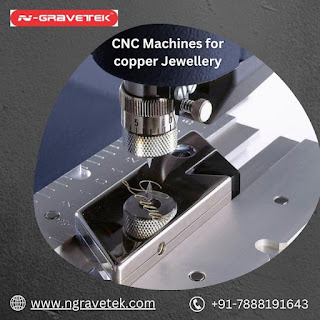Using CNC engraving machine for brass for Perfect Results
Introduction
Precision engraving has undergone a revolution thanks to CNC engraving machines, which enable detailed designs and precise lines on a variety of materials. To get the finest results when engraving on various metals including brass, aluminum, hot die steel, and carbon steel, it's crucial to pick the correct CNC engraving equipment. We will examine the particular specifications and factors for each of these materials in this post.
CNC Engraving Machine for Brass
Brass is a popular material for engraving due to its elegant appearance and ease of machining. To engrave on brass effectively, you need a CNC engraving machine for brass optimized for this purpose.
Key considerations for a CNC engraving machine for brass include:
Spindle Speed: Brass is a relatively soft material, so a high spindle speed is ideal for achieving fine detail and a smooth finish. Look for machines with variable spindle speed control.
Tooling: Carbide or diamond-tipped engraving tools are excellent choices for engraving brass, as they provide precise and clean cuts.
Feed Rate: Adjust the feed rate to ensure that the engraving tool does not dwell too long in one area, preventing heat buildup and potential damage to the material.
Dust Collection: Brass can produce fine chips and dust during engraving, so consider a machine with effective dust collection to maintain a clean workspace.
CNC Engraving Machine for Aluminum
Aluminum is another commonly engraved material known for its lightweight and corrosion-resistant properties. When engraving aluminum, you should select a CNC engraving machine for aluminium that can handle its specific characteristics.
Important features for CNC engraving machines for aluminum include:
Rigidity: Aluminum is softer than many other metals, so a rigid machine frame is essential for stability and precision during engraving.
Tooling: High-speed steel or carbide tools are suitable for engraving aluminum, as they can maintain sharpness and withstand the demands of the material.
Cutting Fluid: Using a cutting fluid or lubricant can improve the engraving process by reducing friction and heat generation.
Speed and Feed Rates: Adjusting the cutting speed and feed rate is crucial to prevent chip buildup and ensure clean, accurate engravings.
CNC Engraving Machine for Hot Die Steel
Hot die steel is a tough and durable material commonly used in mold-making and tooling applications. Engraving on hot die steel requires a CNC engraving machine for Hot Die Steel with the right specifications.
Consider the following factors when choosing a CNC engraving machine for hot die steel:
Power and Torque: Hot die steel is significantly harder than brass or aluminum, so the machine needs a powerful spindle and high torque to achieve deep and precise engraving.
Cooling System: To prevent overheating and tool wear, a CNC machine for hot die steel should have an effective cooling system to dissipate heat during engraving.
Tooling: Choose specialized engraving tools designed for hard materials like hot die steel, such as carbide or diamond-tipped tools.
Feed Rate and Depth of Cut: Adjust these parameters carefully to ensure efficient material removal without putting excessive stress on the tools.
CNC Engraving Machine for Carbon Steel
Carbon steel is known for its strength and versatility, making it a popular choice for various applications. Engraving on carbon steel requires a CNC engraving machine for Carbon Steel that can handle its properties.
Key considerations for CNC engraving machines for carbon steel include:
Spindle Power: Carbon steel is harder than aluminum and brass, so a robust spindle with high power is essential for achieving deep engravings.
Tooling: Choose durable and sharp engraving tools, such as carbide or diamond-tipped options, to maintain precision and longevity.
Cooling and Lubrication: Proper cooling and lubrication systems are crucial for preventing overheating and extending tool life.
Speed and Feed Rates: Adjust these settings to optimize material removal and maintain accuracy during engraving on carbon steel.
Conclusion
getting the best results requires choosing the appropriate CNC engraving machine for a certain material. To ensure accurate and effective engraving, take into account variables like spindle speed, tooling, cooling systems, and feed rates whether you're working with brass, aluminum, hot die steel, or carbon steel. You can fully utilize CNC engraving for a variety of applications by selecting the right machine and parameters.
Call us: +91-7888191643
More about information for CNC engraving machine for brass then Visit our site –
https://www.ngravetek.com/cnc-engraving-machine-for-brass-aluminium-hot-die-carbon-steel.php
Source Link:-
https://www.digitalshivamsharma.com/cnc-engraving-machine-for-brass-aluminium-hot-die-carbon-steel/




Comments
Post a Comment